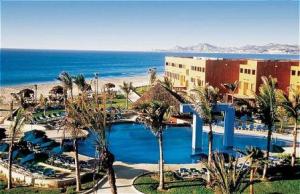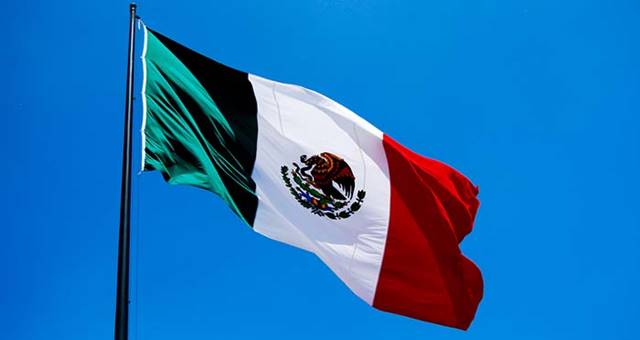By James Wilkinson in Los Cabos, Mexico
From the outbreak of swine flu to drug trafficking violence, the global financial crisis and a series of hurricanes, it’s fair to say Mexico has had a tough 2009.

Presidente InterContinental Los Cabos
But now the country is educating the world how to come back from an epic travel downturn, becoming one of the hottest destinations of 2010 thanks to worldwide marketing, great value holidays, increased accessibility and extensive travel editorial coverage.
Leading hotelier Michael Oney, General Manager of the Presidente InterContinental Los Cabos, said the reason for the turnaround comes down to education from the country’s national and regional tourist boards.
“The Mexican culture has generally focused on the issues at hand and I feel that this has proven to be a great strength in recovering from the myriad of market failures that were faced in 2009,” he told SpiceNews.
“This has allowed Mexico to address the matter, take the necessary steps and move forward. Amazingly enough, what was maybe once considered as a laid-back culture, actually took the issues in stride and did not over-react to extreme and create a non-desirable situation, but rather, a bump in the road.
“Not all tourism destinations could say the same,” he said.
He is entirely right. For example, Thailand continues to struggle on the back of the anti-government protests in April 2009, while Fiji has an ongoing uphill marketing battle thanks the government being in the headlines in Australia and New Zealand for all the wrong reasons.
“Mexico, and moreover Los Cabos, has placed a grand effort in education of the travelling public,” he said. “While no one can deny the impacts of the issues mentioned, it has been our desire to ensure the travelling public that Los Cabos was one of several Mexican resort destinations with a very minimal medical incidence.
“Additionally, with increased accessibility into the Los Cabos area via additional domestic flights, Los Cabos has increased as a destination for Mexicans as well,” he said.
As Oney said, the Los Cabos region – made up of Cabo San Lucas and San Jose del Cabo on the Baja California peninsula – has been spared the full brunt of the 2009 storm. However, the region has still needed to market extensively to assure travellers the peninsula is safe from swine flu and the drug trafficking violence spanning the country’s major cities.
“There have been efforts across the Hotel Association and Visitors Bureau to maintain the focus on Los Cabos being the enjoyable destination upon which it has built its reputation… relaxation and sun in a beautiful Mexican setting, with a dessert backdrop and the deep blue seas at your feet,” he said.
That is on the back of the country’s multi-million dollar travel marketing campaigns that have heavily targeted Americans, Canadians and Europeans.
“Mexico is letting the world know that we are ready to welcome back travellers and continue to offer the beauty, culture, history, gastronomy, and pristine beaches our country is known for,” said Mexico Tourism Board CEO, Oscar Fitch. “Of course this is all within great proximity and at a great value.
The initial results of the campaign, Fitch said, have spoken for themselves.
“Not only are we back up and running and receiving tourists every day, but we are showing the world that this administration represents responsibility,” he said.
The bottom line is the country’s tourist board needed to spend up big to ensure the survival of Mexico’s tourism industry. It is an industry the country relies heavily on – in 2008 alone, 22.6 million international visitors crossed the Mexican borders, spending USD$13.2 billion.
To put the American market in perspective, 18 million US citizens crossed the border in 2008 and the 12 major US markets, along with six in Canada, combined represent over 80% of Mexico’s international tourists.
Oney said he believes the increased marketing from the Mexico Tourism Board has not only helped the major markets pick-up, but opened doors to emerging ones, even as far away as Australia.
“As emerging markets and flight patterns continue to change, Mexico as a prime vacation destination will continue to grow,” he said. “This most definitely has assisted in opening up routes which have not been traditional inbound sources for Mexico.
“Additionally, the focus of today’s traveller to experience more culture and variety, Mexico opens a vast opportunity to enjoy from pre-Hispanic to modern day Mexican culture, along with enjoyable beach climates that not all countries and resort destinations can offer,” he said.
Oney is confident Mexican resort destinations such as Los Cabos can pick up a greater share of the Australian international market, given the affordability and value of airfares currently on offer.
“Los Cabos has not been the traditional destination for Australians, but now with one of the most elusive factors now within reach – airfare prices – it the prime time for the Aussie culture to begin to experience the genuine spirit of Los Cabos, which is like no other in all of Mexico,” he said.
To put the price point in perspective, you can currently fly from Sydney or Melbourne to Los Cabos on United Airlines for under AUD$1300, placing it on par with Southeast Asian destinations such as Langkawi in Malaysia, Koh Samui in Thailand and Indonesia’s Bali in peak season.
Oney said again this was why emerging markets are helping Mexico take top spot on the ‘hottest destinations for 2010’ list in many respectable travel magazines across the globe.
“Mexico, and in specifically, Los Cabos, has risen on the radar for 2010 as an affordable destination that previously elusive economically,” he said.
“While it still maintains a high level of stature, the infrastructure and hotel availability that has grown over the last few years now allows for enjoyment for all spectrums of the travelling market,” Oney said.
All-inclusive resorts such as the 390-room Presidente InterContinental Los Cabos are ensuring that all ends of the spectrum are covered, particularly with affordability taken to new levels. For Australians in particular, it represents excellent value.
“Prices vary depending on room type or location, however, they hover around USD$300 USD for a party of two,” Oney said. “With that in mind and considering the airfares from Sydney are coming in around USD$1200 per person, a couple could enjoy a seven night experience at just under USD$2500 per person.
“I trust that this is comparable to many other resort destinations for the Australian outbound market,” he said.
For a holiday with guaranteed sun – it only rains 16 days per year on average in Los Cabos – it’s no wonder the Baja California peninsula and Mexico in general is going to be a hot destination for 2010.
United Airlines flies daily from Sydney and Melbourne to Los Cabos via Los Angeles. Seamless connections are available in both directions, with only a 1.5 hour transfer is Los Angeles on the flight over. The author recommends flying in Business Class, which was recently upgraded by United and features flat-bed seats and hundreds of hours of entertainment on demand. For bookings, visit www.united.com

